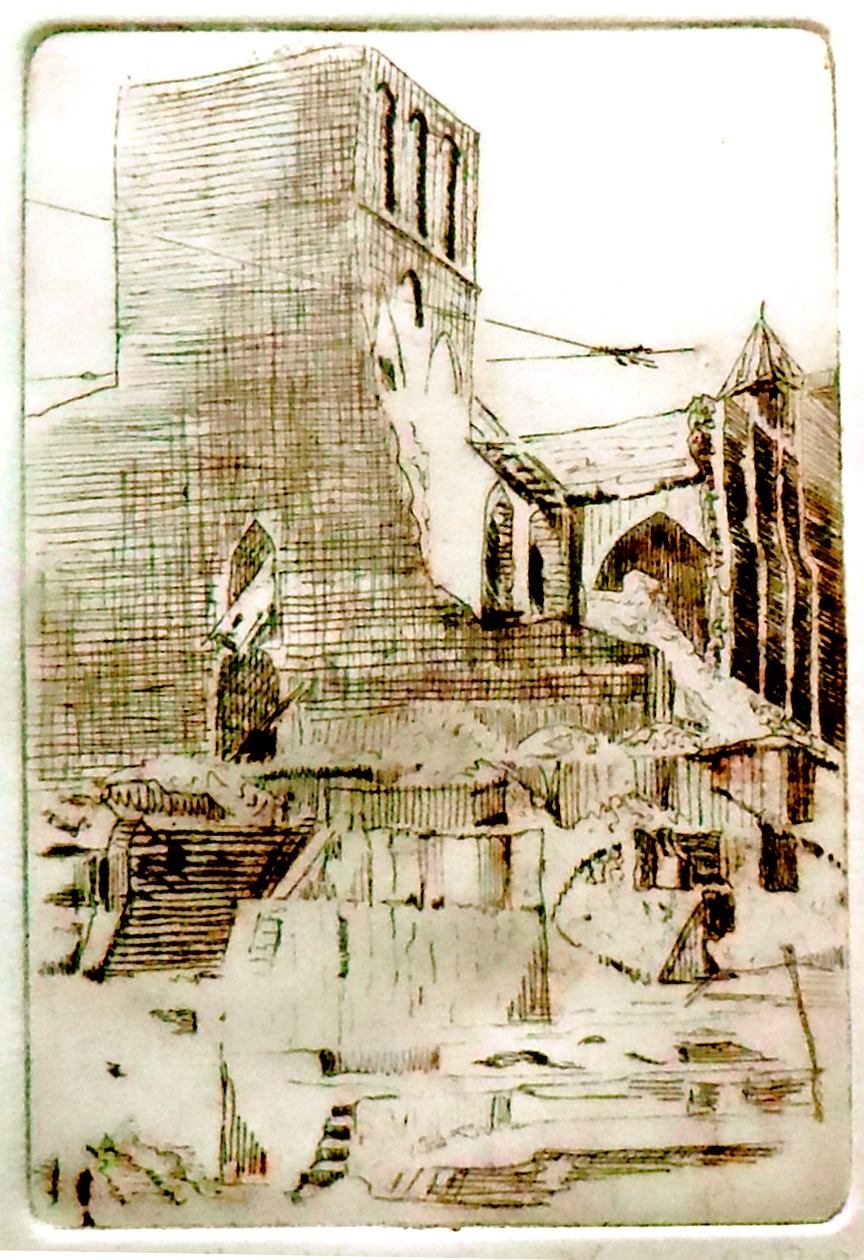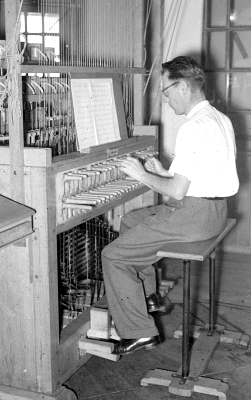Stichting De Traditie -
Cultural
Heritage



Nijmegen - Music
Collateral Damage 1944 - Bombs on Nijmegen

When Arie Peters succeeded Willem de Vries as organist of the St. Stephanus Church, and as carillonneur of its Tower in 1936, Het Vaderland of 22 October 1936 wrote: "On the occasion of the 160th anniversary of the organ in the Great (St. Stephanus) Church, a memorial service was held in this building last night, which also had this particular that the newly appointed organist, Mr. Arie Peters, formerly organist of Juliana church in Utrecht, played the organ for the first time in public. This instrument can be counted among the finest church organs in our country...... it was an impressive evening, with great expectations raised by the young, newly appointed organist. "
The bombing by the Allied Forces on February 22, 1944 destroyed - in addition to more than 800 lives - church, tower, organ and carillon. The "honorable discharge" as carillonneur , a result of the destruction of the tower, led to musical diversification. At the end of his musical career, we see Arie Peters back as carillonneur of Nijmegen, Haarlem, and Cuijck and as organist of the Great Church in Nijmegen. Furthermore, as choirmaster, music teacher, composer, music critic of the Nijmeegs Dagblad, and as a judge at competitions of music services. Inspired by the latter activity he composed on request (band Koninklijke Luchtmacht, lieut. H. van Diepenbeek) De Felicitatie Mars, the rights of which are to benefit the preservation of our cultural heritage. Said diversification resulted in a same number of sections of the collection.

Relatively soon after the end of World War II, the tower was rebuilt and the carillon was put into service again. Carilon performances took already place in 1952; the automatic carillon strew its tunes over the city roofs. carillonneur Arie Peters had kept up his condition during the absence of his instrument by playing his 'study carillon' at home, and by giving guest performances on carillons of other towers in the Netherlands. The console (key board) and the automatic chimes of the carillon were somewhat 'restyled' by the restoration. The original console had lost his wide desk and offered now just enough space to accommodate two music magazines (see picture). The drum of the automatic chimes disappeared, and was replaced by an electro-mechanical automat, consisting of a standard piano keyboard (the closed flap just visible left of the carillon console), and a reader for (barrel) organ books, in which the melody to be played was punched.
20200919